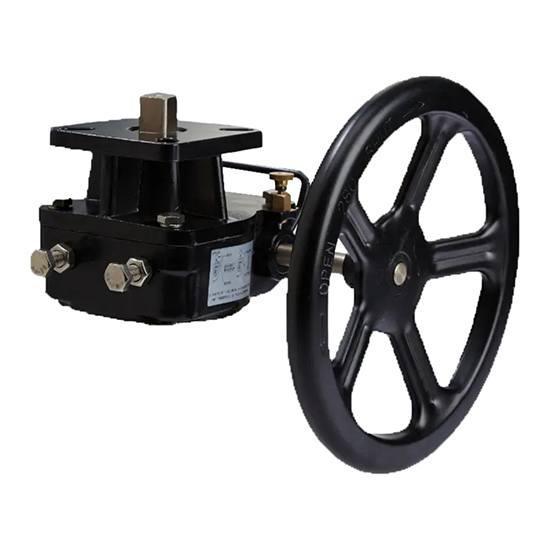Handwheel Actuator
1.Simplicity: They are simple and easy to operate.
2.Reliability: They are mechanically straightforward, leading to high reliability.
3.Cost-effective: They are typically less expensive than other types of actuators.
4.Control: They allow for precise manual control.
5.Low Maintenance: They often require less maintenance.
6.Power Independent: They can operate without a power supply.
7.Safety: They can provide a safer alternative in certain situations.

Every LORZEN Handwheel Actuator has gone through highly controlled conditions to ensure the high quality of your Actuator Accessories.
Product Features:
Manual Override: Allows manual operation of the valve in case of control system failure.
The handwheel actuator consists of a handwheel, transmission device, and connection device. The handwheel actuator is connected to the push rod (or diaphragm plate) of the actuator through a screw transmission device.
During normal operation, the handwheel is retracted and locked with a fastening nut, which can serve as a limit device for the highest valve position.
When manual operation is required, loosen the fastening nut, rotate the handwheel to connect it with the push rod of the automatic actuator, thereby moving the push rod to change the valve opening.
Performance characteristics
1.Small size, light weight, reasonable design, and novel style.
2.Product serialization, matching output torque with various valves in pneumatic devices.
3.The inner hole of the turbine connection has two keyways spaced 90 * apart, allowing users to choose the relative position of the device with the valve according to their needs.
4.Lift the limit pull ring and rotate the eccentric device 90 ° to automatically limit the position, achieving pneumatic operation. Conversely, achieve manual operation.
5.When the product leaves the factory, it is equipped with special lubricating grease. After assembly with the valve, the overall sealing, dust and water protection levels are IP65, IP67, and IP68, which are optional.

Performance Testing
Our state-of-the-art facilities allow rigorous testing to validate function, endurance and environmental protection.
Quality Assurance
100% testing and inspection ensures superior performance of every actuator.
LORZEN Actuator Accessories Are Utilized Across Various Sectors, Including:
Actuator Design
Handwheel Actuator Search
Under normal operating conditions. a safety factor of 20% - 30% is considered for double acting actuators
Example:
Valve torque= 100Nm
Safety torque- 100(1+ 30%) = 130Nm
Air source pressure=5Bar
Compared with the double-acting torque table, the specification of the optional Double-acting actuator is DA105.
- +8613736966003
- sales@lorzval.com
- Lorzen Factory Park, Linyang Industrial District, Oubei Town, Yongjia County, Wenzhou City, Zhejiang Province, China
Handwheel Actuator Related Information
Installation and Maintenance
Installation and Maintenance
The installation and maintenance of a Actuator are relatively straightforward. Here are some basic steps:
Installation: During the installation process, it’s important to ensure the actuator is correctly aligned and secured in the right position. The actuator should be properly interfaced with the driven device (such as a valve or other mechanical component) to ensure accurate and efficient operation.
Maintenance: Maintenance of the actuator typically involves regular inspections and replacement of worn parts. This might include replacing seals, cleaning and lubricating moving parts, and checking and adjusting the control system. In most cases, just carrying out these maintenance steps periodically can ensure long-term reliable operation of the actuator.
Industry Applications/Functional Uses
Industry Applications/Functional Uses
Actuators have a wide range of uses in many different industries and applications. Here are some of the main application areas:
Manufacturing: On automated production lines, these actuators can be used to control a variety of mechanical equipment such as valves, drums, conveyors, etc.
Energy Sector: In the oil, gas, and electricity industries, these actuators can be used to control various types of valves, ensuring efficient distribution and use of energy.
Chemical Industry: In chemical processes, these actuators can be used to precisely control conditions for various chemical reactions, such as temperature, pressure, and flow rate.
Water Treatment: In water treatment facilities, these actuators can be used to control various equipment like pumps, valves, and filters, ensuring effective water treatment.
Food and Beverage Industry: In the production process of food and beverages, these actuators can be used to control various equipment like mixers, ovens, and packaging machines, ensuring efficiency and quality in the production process.
These are just some of the main application areas for Actuators. Thanks to their simple design and operating principle, these actuators can adapt to a variety of different applications and environments.

